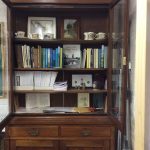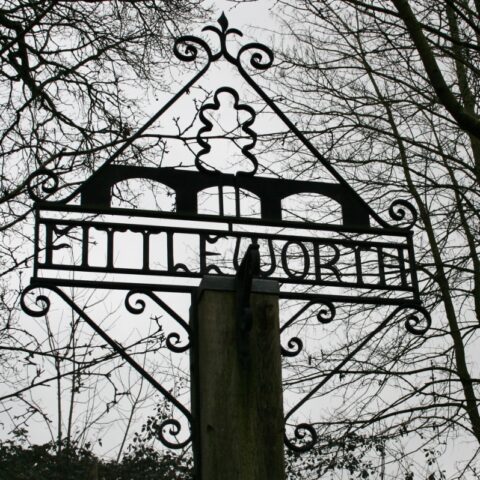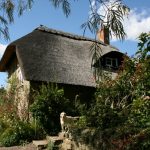Fittleworth Now
Fittleworth, in its beautiful South Downs National Park location, is a friendly village with many clubs and societies, a thriving village primary school and pre-school groups, a 14th century ‘coaching inn’ pub The Swan Inn (home of the once popular ‘Ancient Order of Froth Blowers’), a Sports and Social Club, two Fittleworth village churches and one at Coates, a well-used village hall and our newly built Community Shop with its cafe and Post Office; Fittleworth Stores. It opened along with a new children’s playground in October 2018. There are annual events to share, including the Open Garden Trail, the Spring Show and the Summer Show, for flowers and vegetables, village school events, fêtes – and much more. There are a number of local businesses and cottage industries. Fittleworth has had a long association with the arts and this continues with artists, musicians and authors living here or nearby. Please see ‘Artistic Associations’ at the end of ‘Fittleworth in the Past’.
Fittleworth civil parish, which sits within the South Downs National Park, between Petworth and Pulborough in West Sussex, has a population of just under 1000. It includes the hamlets of Little Bognor and Coates and parts of Egdean and Bedham. Please click on these names to find out more.
Our nearest main towns are Arundel to the south, Chichester and Goodwood to the southwest, Guildford to the north, Horsham to the northeast and Midhurst to the west. The village has a close association with the neighbouring ancient hamlet of Stopham and both St Mary the Virgin parish churches form a joint Benefice. The Village Magazine covers Fittleworth and Stopham.
Here is a link to a map with the civil parish (PC) boundary. It differs from the church parish (PCC) boundary which includes Stopham, but not Egdean or Coates. The River Rother, with its ancient watermill and two stone bridges, formed the southern boundary of the old Tithe map; the civil parish today stretches further south. Click open site, then go to the Map of Fittleworth
Map of Fittleworth Neighbourhood Area – South Downs National Park Authority
Below is a link to a Habitat Survey carried out by village volunteers in 2015, led by South Downs National Park staff and describing different areas of Fittleworth. This survey became part of our Neighbourhood Plan, more of which can be seen on the Council pages of this site.
Habitat Survey
Transport: Frequent trains run through Pulborough to London Victoria (calling at Gatwick Airport) from a number of south coast locations. Further afield, trains to London Waterloo call at Haslemere. The No.1 bus route connects Fittleworth with Worthing and Midhurst (and reaches Pulborough station in a few minutes). Timetables are available at http://www.westsussex.gov.uk
Fittleworth in the past
Old stories of battles, myths and legend abound, in what was once a remote and heavily wooded part of the country. Christianity arrived here later than in most of Sussex. The Downs, forests and rivers made for a challenging route to the sea. However, long before the bridges, it was possible to ford the River Rother at Fittleworth and that would become part of a north/south route, past Bedham to Wisborough Green, with an early settlement evolving near the ford. Further up the hill the east/west route crossing it, would lead to the ‘upper’ part of Fittleworth. There may have been an eleventh century wooden church; later the parish church of St Mary the Virgin was built of stone. Following Victorian ‘renovation’ in 1871, just the tower remains from the twelfth century, along with the thirteenth century chancel of the old church.
Today more evidence of the past is emerging with new technology; LIDAR (aerial photography), has recently found evidence of Bronze Age barrows in a field in Coates, near the River Rother. The barrows would have been used as ceremonial or burial sites. A number of references to archaeological discoveries identifying Fittleworth’s early past can be found in the Fittleworth History Archive and from website links on the village’s ‘Joining up our Heritage’ dvd. The 1839 Fittleworth Tithe Map has been digitised and this is also available to view from the West Sussex Record Office. All three can be accessed in the village by contacting Fittleworth Parish Clerk, emailing fittleworth.archive@gmail.com or phoning 01798 865563. The Archive is a resource about the locality, of documents, books, pictures and artefacts mainly from donations and villagers’ research, for all to use, held in central cupboards and a desk.

The village is very fortunate that historian Dr Anthony Poole has recently published two very informative books about Fittleworth’s history; Fittleworth 1540-1849; one book is about ‘Its people and their way of life’, the other ‘Its houses and their occupants’. The main village reference book had been ‘The Story of Fittleworth’ by The Hon. Lady Maxse (preface 1935). and in the last few years local history books produced have included ‘Fittleworth, Portrait of a Village’ written for the Millennium by the Fittleworth and District Association and a mainly photographic record of ‘Fittleworth – A Time of Change 1895-1916’ compiled by Angela Brookfield and her granddaughter Kiki, from the albums of a relative, photographer John Smith.
Most local historical sources are the records in West Sussex Record Office (WSRO) or contacted by phoning 01243 753602 and also the records in the Norfolk Estate archives. The first Parish Registers to survive, detailing not just the ‘gentry’, but also names, families and occupations of villagers from c 1560, are now held at WSRO.
Historian Dr Anthony Poole who lived in the village, has also researched and written informed monthly articles in the Village Magazine about Fittleworth places and people. It is generally agreed that:-
The name Fittleworth has Saxon origins, probably deriving from ‘Fitela’s worp’ or ‘Fitele’s worth’ meaning ‘the enclosure of Fitele’. Fitele (a Saxon male name) had his enclosure in deeply wooded countryside. It seems not to have been a large enough settlement to be listed in the Domesday Book by 1086, although the name does appear as Fitelwurda in 1186, as Fitelworth in 1200 and as Fytelewurth in 1271.
Fittleworth was in the administrative area of Arundel Rape in Norman times and within that, the Hundred of Bury. This was further divided; one tenth of ‘a Hundred’ was a ‘Tithing’ and much of Fittleworth was part of the Tithing called ‘Sande’. These were civil divisions, used alongside the ecclesiastical ‘parish’.
Nowadays Fittleworth has a civil parish and an ecclesiastical parish, covering slightly different areas, for example Egdean and Fittleworth produced a joint parish magazine in the late 1800s, while now we have the Fittleworth and Stopham Village Magazine. A small part of Egdean is now in Fittleworth’s civil parish; the entire Egdean ecclesiastical parish is in the Petworth diocese.

Fittleworth Parish Council was formed in 1894 and at the Centenary in 1994 the occasion was marked with a small area opposite The Terrace being named as the Centenary Garden. A ‘Fittleworth’ village sign was erected and a centenary bench marked with the dates, during a weekend of special events. The village sign was unveiled by a great grand-daughter of a member ofthe first Parish Council.
Fittleworth’s original corn watermill (with its associations with the old Lee and Dawtry families), Little Bognor corn watermill, the old clapper bridge over the Rother (there are now two bridges) and the parish church of St Mary’s Fittleworth and St Agatha’s at Coates, were all probably in place by 1200. ‘Tripp Hill’ (a name possibly from ‘Rippe’ meaning a steep bank) at the south of the village on the far side of the Rother and ‘Hesworth Common’ (deriving from ‘William de Heresworth’) were there in the 1300s.
‘Two hostelries’ – The Swan Inn in lower Fittleworth and The White Horse Inn at the main crossroads, now White Horse Cottages – as well as more cottages, a fulling mill and the main farms existed by the mid 1500s. Our woods would also have been supplying charcoal, for the iron furnaces for villages in the locality by the 1500s; charcoal too for the nearby glassmaking furnaces and brickmaking kilns. An area of Bedham is still known locally as the ‘charcoal burners’ cottages’. Wood was important for the many timber-framed village buildings and some homes are built from the sandstone and ironstone quarried in the parish and nearby. Today, part of Fittleworth’s St Mary’s parish church has a Grade l English Heritage listing; the parish has more than eighty Grade ll village homes and vernacular buildings.
In 1642 the parish had an adult male population of 122. In 1705 twenty five men from Fittleworth were qualified to vote (the ‘large’ landowners, male only). By 1841 Fittleworth had a new National School, a selection of shops and a post office, a lock on the river and a number of substantial farms – by 1889, there was a railway station and by early 1900 a Mission Room on the edge of Hesworth Common and the Chapel and Schoolroom of St Michael and all Angels at Bedham. A booklet written by Judy Sayers ‘The old Village Trades and Crafts’ of Fittleworth, describes around twenty ‘cottage industries’ in the early 1900s and John Smith (ref. ‘Fittleworth – A Time of Change 1895-1916’) had much influence on the development of village homes at this time.
The oldest properties, including the Swan Inn and St Mary’s Church, are now mainly in Fittleworth Conservation Area. The village school moved to a new building in 1990 and is thriving in its recently updated and extended building. While our only shop is the new Fittleworth Store where there used to be many small shops, this new community shop, with its café, Post Office and a new children’s playground beside it, has become a prizewinning much valued ‘village hub.’
Artistic Associations
The Arts have played an important part in the life of the area. A beautifully carved Roman sculpture ‘Iphegenia’ was discovered in the village a few years ago and there is evidence of much Roman art at sites such as Bignor Roman Villa nearby.
Parish churches locally have some early art and artefacts including St Mary the Virgin’s, Fittleworth where there is a fourteenth century font, and an alter carved from local ‘Petworth marble’ also known as ‘winklestone’. There are interesting early brass memorials, including the ‘Agincourt Knight’ at nearby St Mary the Virgin, Stopham and some well-preserved sixteenth century wall paintings (now at the Weald and Downland Museum, Singleton), that were uncovered in a house in Fittleworth in the late 1960s.
Artists including JMW Turner and John Constable have sketched and painted views of Fittleworth and the surrounding countryside (some now in Tate Britain and the Victoria and Albert Museum) and Charles Sims RA, Rex Vicat Cole and Phillip Padwick lived and painted in the village. The Swan Inn became well known as a haunt of artists in the late 19th, early 20th century. Until a few years ago there was a panelled dining room with many of the paintings by artists who dined or stayed in return for a piece of their artwork. The Swan has recently been sold and it is hoped that many of the paintings will once again be sited in the panels of the dining room. The Swan’s Visitor’s Books recorded the artists, musicians, suffragettes and an array of other visitors.
A list of some of the art and artists living or working in the area was compiled in 2015, in association with a charity evening held by the Friends of St Mary’s, Fittleworth and is available on the separate ‘Art and Artists in Fittleworth’ page.
The visual arts are still very much alive and well in the area; both through interested groups meeting locally (The Arts Society West Sussex and The Arts Society South Downs) and amateurs and professionals in sculpture, painting, photography, textile and pottery. While the Old Rectory that had been a centre for many arts courses in Fittleworth, has now been redeveloped, painting courses still continue and the list of artists ‘now’ in the Archive’s Art and Artists list, happily, needs constant updating.

Sir Edward Elgar, composer and conductor, rented a cottage, Brinkwells in Bedham Lane in 1917. He found the quiet woodland inspirational ’wood magic’ and it was while living in Bedham, that Elgar wrote the greater part of his ‘cello concerto Opus 85 http://www.elgar.org/3cello-c.htm in 1919, as well as the violin sonata opus 82, string quartet opus 83 and the piano quintet Opus 84. In June 2017 over Elgar’s birthday, a weekend of celebratory concerts and a local walk with music and places associated with Elgar was held to mark 100 years since his arrival in Fittleworth. Please see the Menu; Gallery; ‘Elgar in Sussex’ for photographs.
Many of Elgar’s compositions were written in the studio in the garden of Brinkwells, Bedham, which had also been used by artist Rex Vicat Cole, (the studio was reputedly moved to Wakestone Lane, Bedham and is now a B&B). Elgar finally left Fittleworth in 1921, after the death of his wife Alice and also having unsuccessfully tried to buy Brinkwells.
Records from the visitor’s books at the Swan Inn also confirm the composer Sir Hubert Parry, Rudyard Kipling and many others spent time there; Eric Thiman who admired Elgar’s compositions, wrote a suite of music called Fittleworth air and Sir Hubert Parry wrote ‘A Song to the River’ (Rother).
Musicians living, composing and playing now, include Bryan Ferry (Roxy Music formed 1971, disbanded 2011, though Bryan Ferry continues to compose and perform).
Many Fittleworth residents enjoy and are involved in the organisation of, the Petworth Festival, which plays host to world class musicians each July, www.petworthfestival.org.uk/ with some concerts in local venues and a Literary Festival in the Autumn.
Fittleworth with the South Downs nearby have inspired much writing and several authors live here now. Fittleworth is close to the Festival Theatre in Chichester and has been a home to a number of actors including Dame Maggie Smith, Dorothy Tutin and Amanda Waring and to comic actor Jimmy Edwards. David Jacobs of many TV and radio programmes was a familiar face in the village, though sadly no longer. Actor and broadcaster, Duncan Carse (voice of detective Dick Barton), lived in Fittleworth and was also a noted explorer of Antarctica and South Georgia (there is a bust of Duncan Carse by sculptor Jon Edgar). Jon’s website contains much about Fittleworth and the people associated with it at Fittleworth Miscellanea
Art and Artists in Fittleworth. Please click here to view this page.